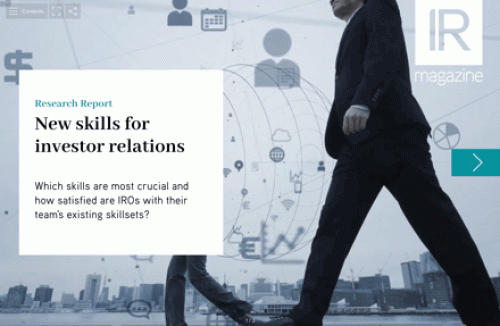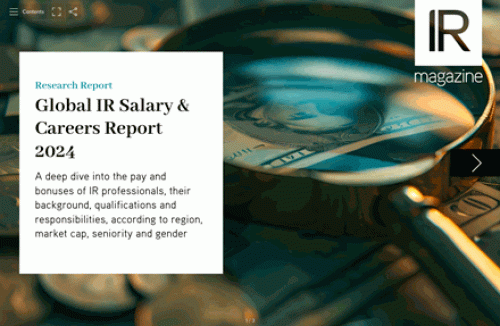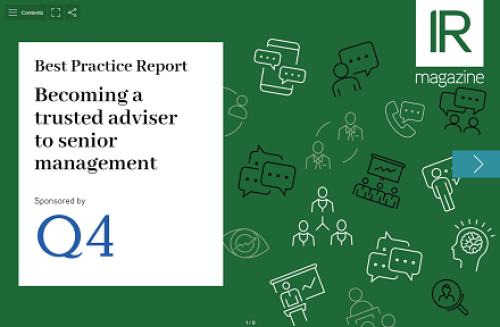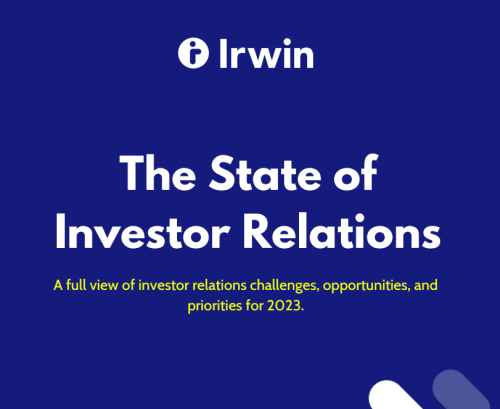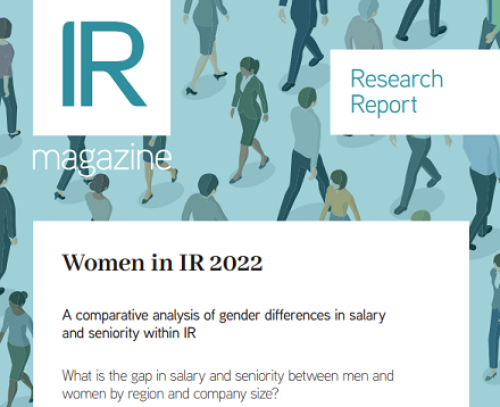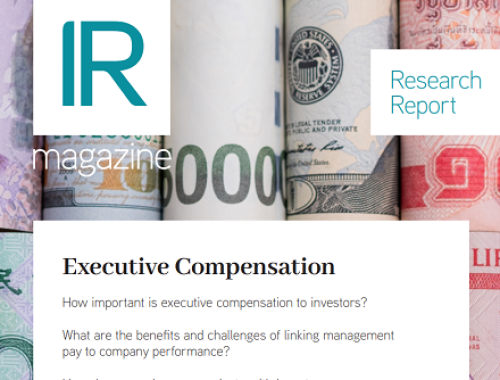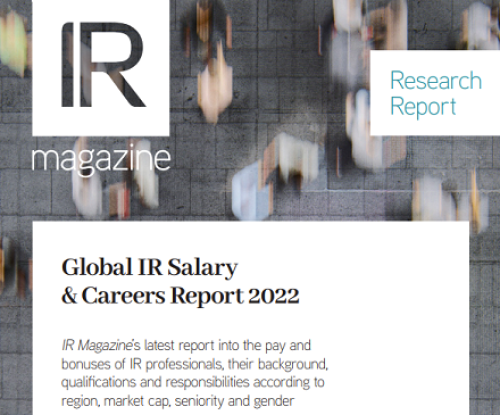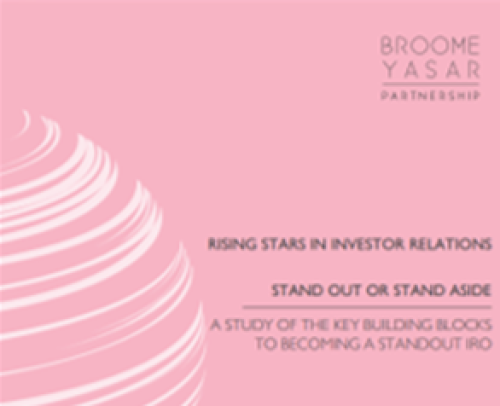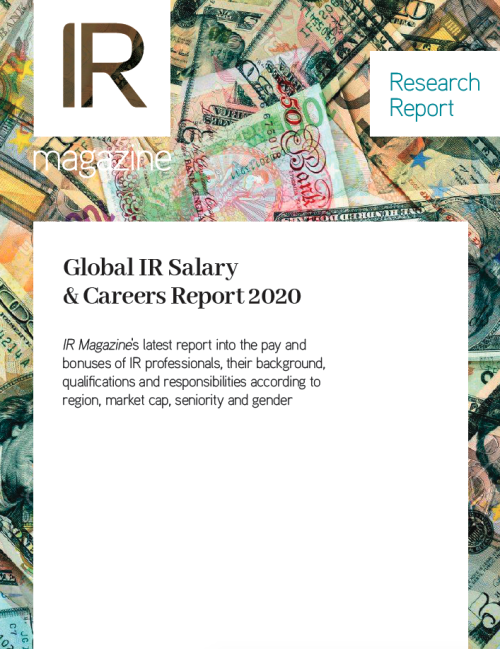When Paolo Casamassima was appointed CEO of the Middle East Investor Relations Association (MEIRA) in December 2023, the chair of the association, Andrew Tarbuck, said Casamassima brought ‘outstanding and relevant experience to his new role’ and that he would ‘contribute enormously to the further development of MEIRA’s offering for the benefit of our members and partners.’
Just three months into his tenure, Casamassima is already making waves. In an exclusive interview with IR Magazine, he shares his vision and long-term strategies for the association, which spans 10 country chapters across the Middle East. Delving into regional trends and challenges, he also addresses the perception of the IR profession by local companies.
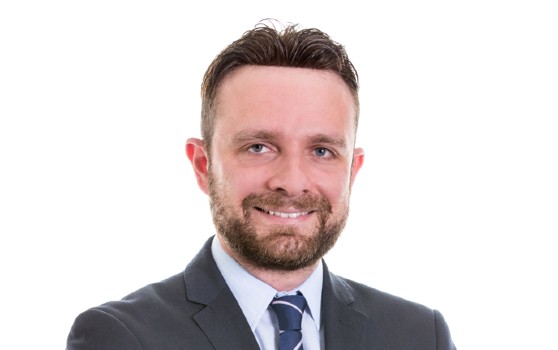
How did you get into IR?
My career in IR started in 2008, when I joined Ipreo, now part of S&P Global, as an investor relations research analyst. The manager at the time, Michael O’Brien, was looking for a Spanish and Italian speaker and, as I could speak both languages, I decided to give it a go and joined his team in London.
What are your aspirations as the new CEO of MEIRA?
I would like MEIRA to become the most disruptive IR association worldwide, and I want to start by creating a number of very bespoke IR courses. At the moment, MEIRA offers members education courses and certifications, but those are foundational certifications. So we are revisiting the material we have available and we have started to create bespoke courses. These include sector-focused programs and eventually we would like to introduce country-focused courses.
Starting with the sector-specific ones, we have introduced the first IR in telecoms course, which is tailored to IROs working in the telecoms sector, or those who would like to make a transition from another industry to telecoms. We have announced an IR in the oil & gas sector course – which we will start in May – and we will also have the first IR in the metals & mining industry course. We are reviewing the list of our members and our goal is to cover all sectors, or at least the largest sectors based on what our members require.
Regarding making MEIRA disruptive, I have always felt that perhaps IR associations miss one piece of the puzzle. The capital markets wouldn’t be capital markets without institutional investors, which is why I want to open up the association to institutional investors. And I am pleased to say we welcomed our first buy-side member two months ago: Mayar Capital, a value-oriented investor based in London.
Which lessons from your experience in capital markets around the world do you bring to your role at MEIRA?
In my previous role as head of global marketing intelligence at Orient Capital, I led three divisions: shareholder analysis, targeting and investor perception. And one of the first things I did when I joined MEIRA was to conduct a survey of our members’ sentiment toward MEIRA.
I’ve listed at least five areas where members would like to see more from us – one of which is to see a lot more buy-side engagement. In addition, they would like to see more bespoke education. I have always been client-focused and I see our members as my clients, so we are really trying to think outside the box to provide a lot more value to our members.
If you were to highlight three trends and three challenges in the regions covered by MEIRA, what would those be?
Let’s start with trends. ESG is a big trend in the sense that we are seeing an increased push by regulators – and others – toward further disclosure from companies. For example, at our annual conference last year, Bahrain introduced a set of mandatory ESG disclosure rules; by December 2024, all corporates in the country will have to disclose ESG-related data based on a specific set of criteria. This was one country, but it’s likely it will start to happen in other regions covered by MEIRA as well.
And while ESG it’s a trend, it is also a challenge. That’s because while there are a multitude of service providers and consultants, IROs often do not know where to start. There is a myriad of frameworks and company and sector-specific considerations that need to be complied with, and then there are investors’ requirements – that’s a huge challenge for IR. I would add that IR professionals can’t be experts in the E, S and G parts of the acronym so, ultimately, they are likely to have to pay a consultant who can help them in this disclosure journey.
At MEIRA we are trying to strengthen our offering in terms of ESG education for IROs. It’s early stages, but we have started rolling out events on the topic and will further develop programs and seminars on this front.
Another trend is digital engagement. For example, there is a significant shift toward CRM platforms being used as an IR management tool. In my view, this will continue to be an important trend. More broadly, the impact of AI on the IR function is another challenge. While it will help with some IR-related tasks, the first risk is that it can make engagement with the buy side a lot more complex.
As an IRO, you will be facing institutional investors that because of AI, can now digest a much bigger set of data. Before, they were maybe conducting peer analysis and comparing a stock against five or 10 others. In a few months, it’s likely they will be able to come up with comparisons across an entire industry. It will become increasingly difficult for IR to face the buy side.
The other challenge AI poses is with regards to the profession. One member told me that within a few years, AI will make at least a third of IROs redundant. For example, some corporates are already starting to consider bots for automating some of the IR-related processes and responses to investors’ queries. I guess we shall have to wait and see.
We have been having conversations that highlight a shortage of IROs in the region. Would you agree with that?
I wouldn’t say there is a shortage of IR professionals: in Saudi Arabia alone there are more than 250 IROs. As the judge at a recent event in Saudi Arabia, I’ve also been reviewing lots of applications for best IR program and best ESG program for the awards at the Saudi Capital Market Forum and I can say the quality of the applications we received was very high.
Compared with other countries such as the UK or the US, however, there is a difference in this region in terms of the level of engagement IROs have with senior management. Unfortunately, at many companies – not all, but many – the IR function is still seen as almost a PR role and access to management or the board is limited. Therefore, for the function to achieve its full potential and to be respected as much as it is in the UK or the US, it needs to elevate.
Do you think the trust placed in IR is directly linked to the size of a company?
There is some correlation, but not always. I’ve seen a small-cap company based in Jeddah hire a very ambitious IRO and this company is now proactive when it comes to its investor relations program and strategy; previously it appeared reluctant to have an active IR professional.
I’ve also worked with companies that perhaps had a very proactive approach to IR and then suddenly decided to run without it. You will find that even companies that are experiencing exponential growth can decide not to have a full-time IR practitioner. It really depends.
Are investors in the region prepared to engage with IR instead of directly with management?
I think there should be a transition period whereby IR starts to be always present and then slowly goes independent. That is already happening but, for many companies, if historically there has not been an IRO going out to talk to investors, it will be necessary to have a transition period, where management will introduce the function and the practitioner to investors. Alongside a transition period, there should be a strategy and plan that aim to boost the IR function to its full value and potential within the company itself.
If you could pass on one IR lesson to IROs in the Middle East right now, what would it be?
Don’t be afraid of engaging with senior management and, if possible, even with the board. Educate yourself about the equity story so you can confidently engage and communicate with institutional investors – only then will you become the point of contact between your company and its investors. And when you have achieved that, you will have become an IRO in the way the profession is seen in the western world.

